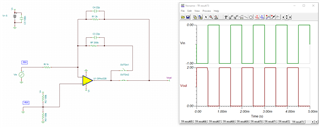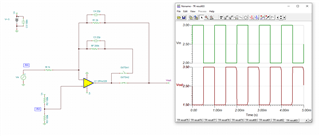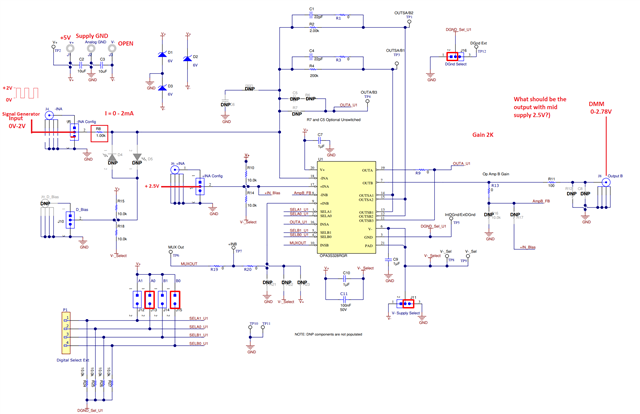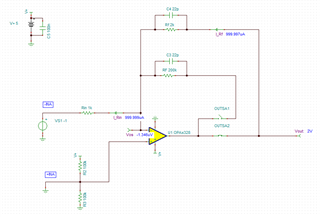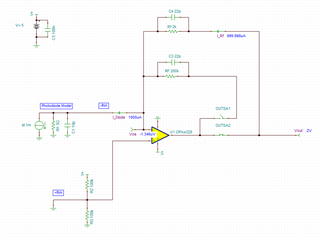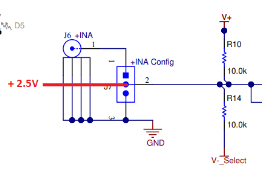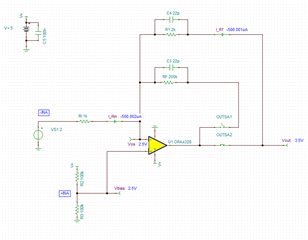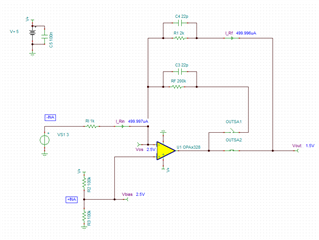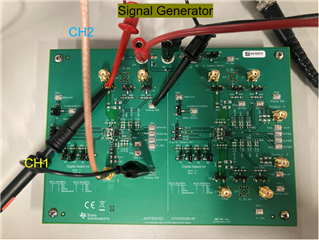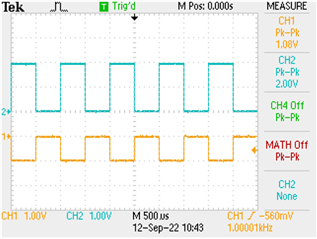Other Parts Discussed in Thread: TINA-TI
I have OPA3S328EVM board with me for testing, I am trying to simulate in-gas photodiode which has two ranges for my application 10uA - 1mA and 50uA - 5mA
i am using the inbuilt resistor of 1K to convert voltage input into currrent using the vaiable voltage from external SMA connector from 500mV - 2V with selected gain of 2K using site 1.
with 1V input, i should get 2V output correct? I am not able to read the correct output.
also supply ground and input connector ground should be same? right now i am connecting functional generator square wave to the input and 5V DC supply to the V+ and supply ground to V-, and all the jumpers are placed accordingly
A1 low A2 shunt B1 low B2 shunt J11 & J17
Can you please provide the application example or details.
thank you



